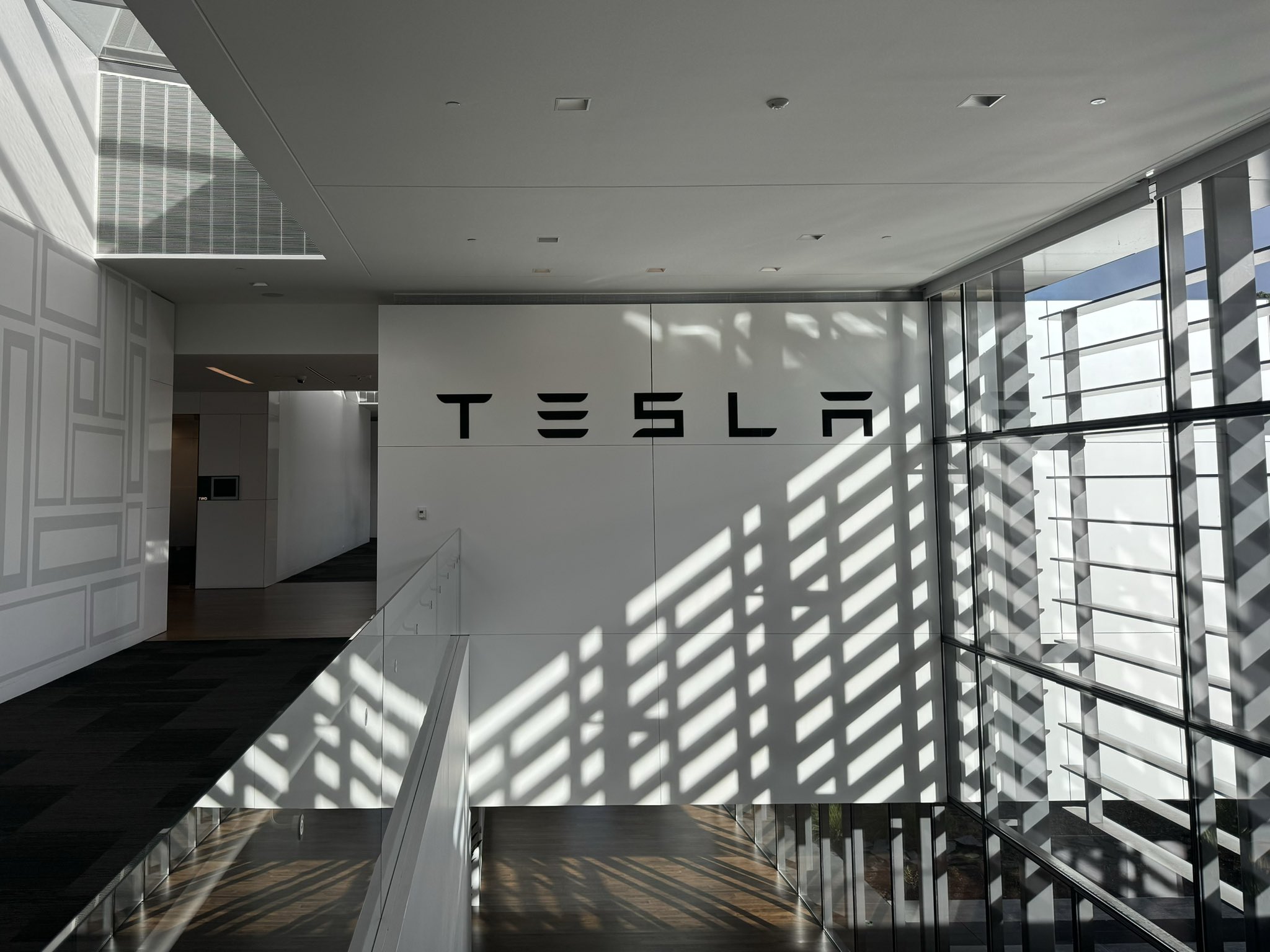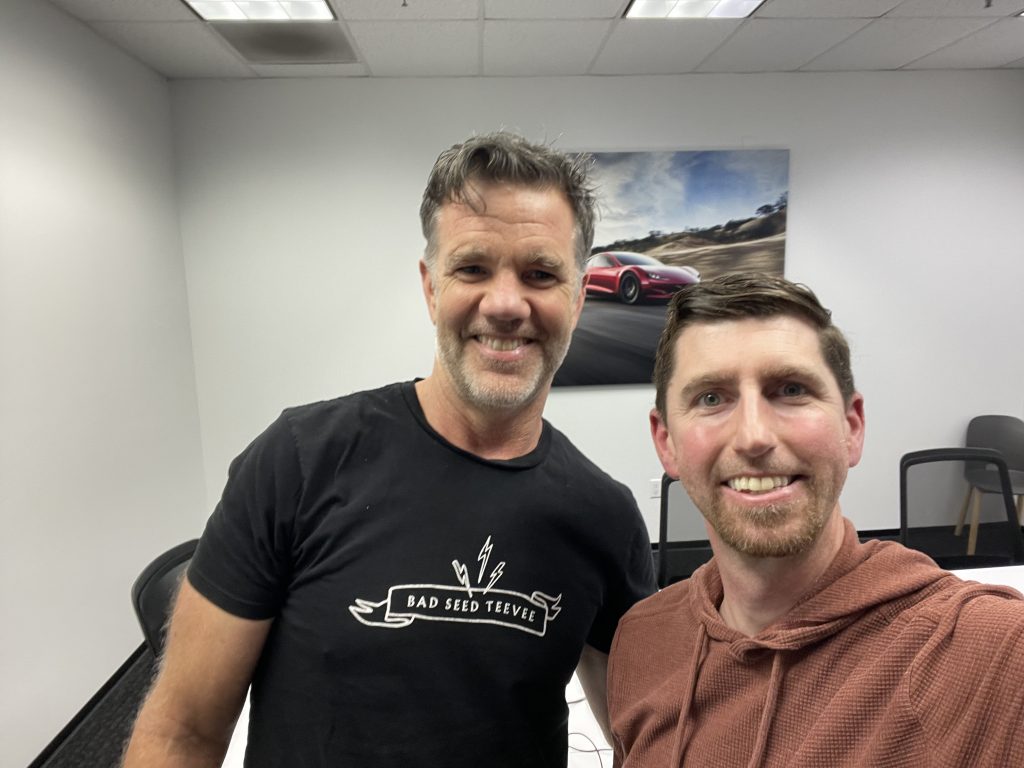News
Tesla design head reflects on over 16 years with the company
Designing for the future with Tesla’s Franz von Holzhausen.

Tesla’s Senior Design Executive Franz von Holzhausen was interviewed in the 500th episode of the Ride the Lightning podcast over the weekend, talking about topics from the new Model Y Performance to Optimus, and even sharing what has kept him coming back for over 16 years.
In the interview, host Ryan McCaffrey asks von Holzhausen a handful of questions about the executive’s design decisions, what can be expected on upcoming releases, and his own reaction to seeing increasing numbers of Tesla vehicles on the road. When asked about what has kept him at Tesla for so long, however, the design lead points to the company’s mission, noting that his young self would be “shocked” if he saw what he was working on today and how much he has learned.
“The thing that keeps me coming here is the potential for the future and what we’re able to create, and how we’re able to… in a way, we’ve proven that we can steer the future a little bit,” von Holzhausen says.
When asked if it was common for designers to stay at one company for so long, he also says that it “sure doesn’t seem like it,” pointing out that he had previously been on a roughly-four-year rotation prior to starting with Tesla, and adding that he thought he would stay on that path. The design head’s past employers were Mazda, General Motors (GM), and Volkswagen.
He also explains that some of the exciting projects he’s been able to work on, including vehicles, autonomous robotaxis, and humanoid robots, to name a few, are a major part of what keeps him there, in addition to Tesla’s original mission.
“I wouldn’t be here if we didn’t have the mission,” von Holzhausen says of the company’s mission to accelerate the world’s transition to sustainable energy.
“In the early days, the mission was the same, and we didn’t know if we could make an impact. The mission is something that you aim for, right? And we kept aiming for it and kept getting better, and then we subsequently started to see the impact of what we were producing and what we were creating having an impact that was steering, ultimately steering the rest of the world, in this direction.
“And once you realize the impact, you’re like ‘Wow, we can really steer the future for the better.’ And now, we like owe it to ourselves and to everybody and the rest of the world to continue on that path.”
While McCaffrey suggests that the designer might be the second-longest-tenured employee besides the CEO, von Holzhausen says there actually at least “a handful of other people” who have been with the company for longer. However, he says they would also likely agree about how quickly the time has gone to bring the automaker to this point.
The conversation spans over an hour long, and von Holzhausen goes on to talk about how seeing his own vehicles on the road makes him continually self-critique his work as he aims to make things better and develop the next thing. He also talks about the importance of making great products, and how he and Tesla expect that approach to win customers over, no matter what kind of fear, uncertainty and doubt may be floating around about the company.
Listen to the 500th episode of McCaffrey’s Ride the Lightning podcast below, featuring Tesla’s Chief Designer Franz von Holzhausen for his third appearance on the show. You can also see a photo of the two below, as shared in a post on X from McCaffrey.

Credit: Ryan McCaffrey | X
READ MORE ON TESLA’S FRANZ VON HOLZHAUSEN: Tesla redesigned this crucial piece of hardware on the new Model Y
In the podcast, von Holzhausen also talks about speculation that the company’s Glacier Blue could eventually make it to the U.S., as well as if Tesla plans to discontinue Midnight Cherry Red—though he says he can’t comment directly on either.
The executive’s appearance on the podcast also comes after McCaffrey last week interviewed Tesla’s Vice President of Vehicle Engineering, Lars Moravy. It also comes as the latest of appearances from both executives, who were last month featured in a video from Tesla about the new Model Y, along with talking to Jay Leno about the refreshed vehicle.
The two executives also confirmed in the former video that Tesla will indeed be launching a Model Y Performance later this year, along with a seven-seat configuration.
In December, von Holzhausen also shared some details about the design for the recently unveiled Cybercab, noting in another video with Pedersen Auto Museum that the gold color is a shout-out to New York City’s yellow taxi cabs.
Tesla makes a decision on the future of its flagship Model S and Model X

News
Tesla (TSLA) receives “Buy” rating and $551 PT from Canaccord Genuity
He also maintained a “Buy” rating for TSLA stock over the company’s improving long-term outlook, which is driven by autonomy and robotics.

Canaccord Genuity analyst George Gianarikas raised his Tesla (NASDAQ:TSLA) price target from $482 to $551. He also maintained a “Buy” rating for TSLA stock over the company’s improving long-term outlook, which is driven by autonomy and robotics.
The analyst’s updated note
Gianarikas lowered his 4Q25 delivery estimates but pointed to several positive factors in the Tesla story. He noted that EV adoption in emerging markets is gaining pace, and progress in FSD and the Robotaxi rollout in 2026 represent major upside drivers. Further progress in the Optimus program next year could also add more momentum for the electric vehicle maker.
“Overall, yes, 4Q25 delivery expectations are being revised lower. However, the reset in the US EV market is laying the groundwork for a more durable and attractive long-term demand environment.
“At the same time, EV penetration in emerging markets is accelerating, reinforcing Tesla’s potential multi‑year growth runway beyond the US. Global progress in FSD and the anticipated rollout of a larger robotaxi fleet in 2026 are increasingly important components of the Tesla equity story and could provide sentiment tailwinds,” the analyst wrote.
Tesla’s busy 2026
The upcoming year would be a busy one for Tesla, considering the company’s plans and targets. The autonomous two-seat Cybercab has been confirmed to start production sometime in Q2 2026, as per Elon Musk during the 2025 Annual Shareholder Meeting.
Apart from this, Tesla is also expected to unveil the next-generation Roadster on April 1, 2026. Tesla is also expected to start high-volume production of the Tesla Semi in Nevada next year.
Apart from vehicle launches, Tesla has expressed its intentions to significantly ramp the rollout of FSD to several regions worldwide, such as Europe. Plans are also underway to launch more Robotaxi networks in several more key areas across the United States.
News
Waymo sues Santa Monica over order to halt overnight charging sessions
In its complaint, Waymo argued that its self-driving cars’ operations do not constitute a public nuisance, and compliance with the city’s order would cause the company irreparable harm.

Waymo has filed a lawsuit against the City of Santa Monica in Los Angeles County Superior Court, seeking to block an order that requires the company to cease overnight charging at two facilities.
In its complaint, Waymo argued that its self-driving cars’ operations do not constitute a public nuisance, and compliance with the city’s order would cause the company irreparable harm.
Nuisance claims
As noted in a report from the Los Angeles Times, Waymo’s two charging sites at Euclid Street and Broadway have operated for about a year, supporting the company’s growing fleet with round-the-clock activity. Unfortunately, this has also resulted in residents in the area reportedly being unable to sleep due to incessant beeping from self-driving taxis that are moving in and out of the charging stations around the clock.
Frustrated residents have protested against the Waymos by blocking the vehicles’ paths, placing cones, and “stacking” cars to create backups. This has also resulted in multiple calls to the police.
Last month, the city issued an order to Waymo and its charging partner, Voltera, to cease overnight operations at the charging locations, stating that the self-driving vehicles’ activities at night were a public nuisance. A December 15 meeting yielded no agreement on mitigations like software rerouting. Waymo proposed changes, but the city reportedly insisted that nothing would satisfy the irate residents.
“We are disappointed that the City has chosen an adversarial path over a collaborative one. The City’s position has been to insist that no actions taken or proposed by Waymo would satisfy the complaining neighbors and therefore must be deemed insufficient,” a Waymo spokesperson stated.
Waymo pushes back
In its legal complaint, Waymo stated that its “activities at the Broadway Facilities do not constitute a public nuisance.” The company also noted that it “faces imminent and irreparable harm to its operations, employees, and customers” from the city’s order. The suit also stated that the city was fully aware that the Voltera charging sites would be operating around the clock to support Waymo’s self-driving taxis.
The company highlighted over one million trips in Santa Monica since launch, with more than 50,000 rides starting or ending there in November alone. Waymo also criticized the city for adopting a contentious strategy against businesses.
“The City of Santa Monica’s recent actions are inconsistent with its stated goal of attracting investment. At a time when the City faces a serious fiscal crisis, officials are choosing to obstruct properly permitted investment rather than fostering a ‘ready for business’ environment,” Waymo stated.
News
Tesla FSD v14.2.2 is getting rave reviews from drivers
So far, early testers have reported buttery-smooth drives with confident performance, even at night or on twisty roads.

Tesla Full Self-Driving (Supervised) v14.2.2 is receiving positive reviews from owners, with several drivers praising the build’s lack of hesitation during lane changes and its smoother decision-making, among others.
The update, which started rolling out on Monday, also adds features like dynamic arrival pin adjustment. So far, early testers have reported buttery-smooth drives with confident performance, even at night or on twisty roads.
Owners highlight major improvements
Longtime Tesla owner and FSD user @BLKMDL3 shared a detailed 10-hour impression of FSD v14.2.2, noting that the system exhibited “zero lane change hesitation” and “extremely refined” lane choices. He praised Mad Max mode’s performance, stellar parking in locations including ticket dispensers, and impressive canyon runs even in dark conditions.
Fellow FSD user Dan Burkland reported an hour of FSD v14.2.2’s nighttime driving with “zero hesitations” and “buttery smooth” confidence reminiscent of Robotaxi rides in areas such as Austin, Texas. Veteran FSD user Whole Mars Catalog also demonstrated voice navigation via Grok, while Tesla owner Devin Olsen completed a nearly two-hour drive with FSD v14.2.2 in heavy traffic and rain with strong performance.
Closer to unsupervised
FSD has been receiving rave reviews, even from Tesla’s competitors. Xpeng CEO He Xiaopeng, for one, offered fresh praise for FSD v14.2 after visiting Silicon Valley. Following extended test drives of Tesla vehicles running the latest FSD software, He stated that the system has made major strides, reinforcing his view that Tesla’s approach to autonomy is indeed the proper path towards autonomy.
According to He, Tesla’s FSD has evolved from a smooth Level 2 advanced driver assistance system into what he described as a “near-Level 4” experience in terms of capabilities. While acknowledging that areas of improvement are still present, the Xpeng CEO stated that FSD’s current iteration significantly surpasses last year’s capabilities. He also reiterated his belief that Tesla’s strategy of using the same autonomous software and hardware architecture across private vehicles and robotaxis is the right long-term approach, as it would allow users to bypass intermediate autonomy stages and move closer to Level 4 functionality.








